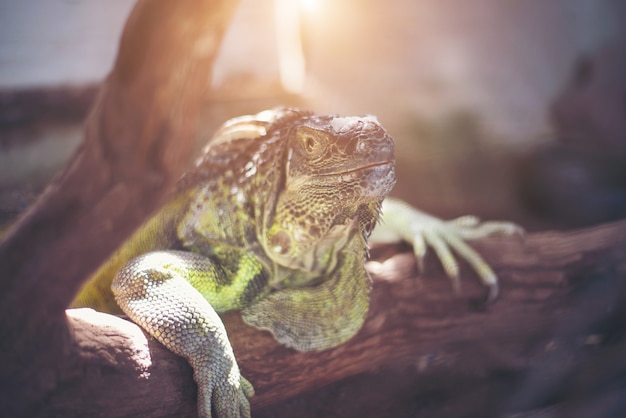Interesting Facts about Komodo Dragons

Komodo dragons are the largest lizards in the world, growing up to 10 feet long.
Despite their massive size, komodo dragons are excellent swimmers.
Komodo dragons have a venomous bite that contains over 50 different strains of bacteria.
These dragons have been clocked at speeds of up to 12 miles per hour.
Komodo dragons have a keen sense of smell, which helps them locate their prey from miles away.
A komodo dragon can eat up to 80% of its body weight in a single meal.
Female komodo dragons can reproduce without a male through a process called parthenogenesis.
The average lifespan of a komodo dragon in the wild is around 30 years.
Komodo dragons have a unique hunting strategy where they wait for their prey to die from the toxic bacteria in their mouths.
Komodo dragons have a forked tongue, similar to a snake, which helps them sense their surroundings.
These lizards have a powerful tail that can be used as a weapon against predators.
A study found that komodo dragons have an advanced thermal sensory system that helps them locate warm-blooded animals.
Komodo dragons have a strong bite force, capable of crushing bones.
Despite their size and strength, komodo dragons are skilled climbers.
Komodo dragons have a highly acidic stomach, capable of dissolving bones and teeth.
These lizards have sharp, serrated teeth that help them tear through tough flesh.
Komodo dragons can eat carrion and are not afraid to scavenge for their meals.
Interesting Facts about Komodo Dragons part 2
These reptiles have a powerful sense of hearing and can pick up vibrations from their surroundings.
Komodo dragons have a long, yellow, forked tongue that they use to taste the air for potential prey.
Komodo dragons have excellent camouflage that helps them blend into their natural habitat.
These lizards have a relatively low metabolic rate, allowing them to survive on just a few meals per month.
Female komodo dragons are protective mothers and will guard their nests until their eggs hatch.
Komodo dragons have a unique way of eliminating excess salt from their bodies: they use a gland in their mouth.
These lizards have been known to engage in cannibalism, often eating smaller or weaker members of their own species.
Komodo dragons have a special lizard-like adaptation that allows them to breathe fire (just kidding!).
These dragons have a four-chambered heart, similar to mammals, which helps them conserve energy.
Komodo dragons can go through periods of fasting, sometimes lasting weeks or even months.
These lizards have a territorial nature and will defend their territory against intruders.
Komodo dragons have incredible regenerative abilities and can heal wounds quickly.
The scales of a komodo dragon are richly colored and can range from dark green to gray or brown.
These lizards have a pronounced, muscular neck that gives them a distinctive appearance.
Komodo dragons are excellent climbers and can often be seen perched high in trees.
These dragons have a complex social structure and employ various body language signals to communicate with each other.
Komodo dragons have been featured in many popular culture portrayals, including movies and video games.
These massive lizards have few natural predators in their native habitats.
Komodo dragons have been observed using tools in the wild, such as using sticks to dislodge prey from tree branches.
These dragons have a surprisingly gentle side, as some individuals have been known to form strong bonds with their human caretakers.
Komodo dragons have a prehistoric appearance, resembling the dinosaurs of ancient times.
These lizards have a highly efficient digestive system that allows them to extract as many nutrients as possible from their meals.
Komodo dragons have a unique way of marking their territory: they use a gland near their cloaca to secrete a musky odor.
These dragons have a powerful sense of sight and can detect movement from great distances.
Komodo dragons have a varied diet that includes not only mammals but also birds, snakes, and even smaller komodo dragons.
These lizards have large, muscular jaws that can unhinge to accommodate larger prey.
Komodo dragons have a high level of intelligence, often displaying problem-solving skills in captivity.
These dragons play a crucial role in maintaining the ecosystem of their island habitats by acting as top predators.